Notes
On Photography, Oct. 7, and Palestinians Under the Gun in Jerusalem
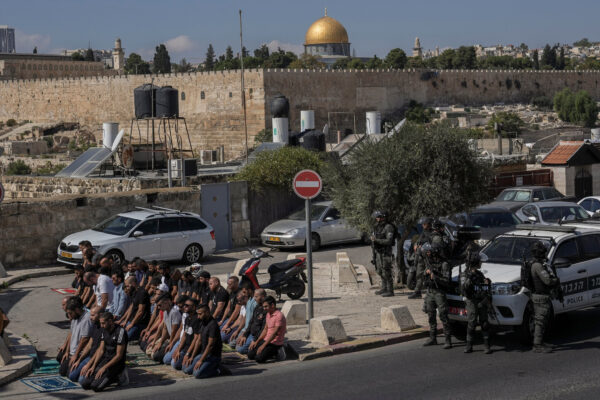
Palestinian worshippers pray outside Jerusalem’s Old City while Israeli forces stand guard, Friday, Oct. 13, 2023. Photo: Mahmoud Illean/AP
Angle and position can also be seen as one of the moral tests of war photography, as any event is understood to be what it is only after it is framed.
By Philip Perdue
Three weeks have passed since October 7, when Hamas terrorists launched missile attacks and surged past Israeli borders, killing more than a thousand Israeli citizens and capturing hundreds more. Three weeks of reckoning with the shock of deliberate moral atrocity. So while Israeli leaders and the IDF figure out the nature and scope of their response, the question for everyone else watching has been: “Whose side are you on?” To side publicly with Palestinians or Israelis is a way to shore up one’s moral position.
Put another way, it is to insist that one’s angle of spectatorship — where one stands in viewing the conflict — is itself a moral test of the moment.
Especially in the context of war, principled stances like to present themselves as a result of fair and just evaluation: just enough historical context, just enough piety, just enough disregard for factors that shouldn’t matter. To place October 7th in an overly broad historical context, for example, is to take one’s eyes off the immediate brutality and fail to see “the event” for what it is. By the same token, centering the experience of people with too much (or too little) advantage is a failure to understand justice, and so on.
This moment highlights the similarities between moral positioning and news photography, both of which stress the importance of standpoint.
This photo above, made by Mahmoud Illean for the Associated Press, invites symmetrical thinking about the war, as the image splits our field of view in half by the pole with the ironic “No Entry” sign in the center. To the left, Palestinian worshippers face Mecca, and to the right, IDF soldiers stand guard. The photograph’s composition settles the imbalance of forces in Jerusalem by pitting submissive piety more or less evenly against strength of arms. Both groups embody different expressions of political power, even while the same view complicates that parity by compelling the Dome of the Rock to take sides.
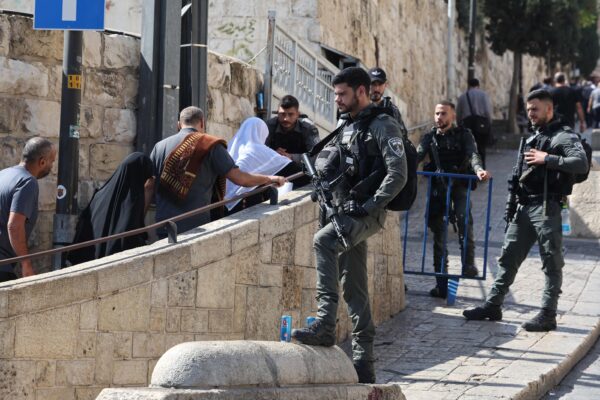
Israeli security look on as Muslim worshippers, men and women, arrive at the Lion’s Gate to make their way to the Al-Aqsa Mosque compound for the Friday noon prayer in east Jerusalem on October 20, 2023, amid the ongoing battles between Israel and the Palestinian group Hamas in the Gaza Strip. Photo: Ahmad Gharabli/AFP/Getty Images
That idea of equilibrium shifts under reports from that same day explaining how Israeli police in Jerusalem were stopping men under 65 and women under 50 years of age from entering the al-Aqsa Mosque for morning prayers, corralling men onto the sidewalk and bringing a private ritual out into public view. With militarized security and Jerusalem’s walled urban infrastructure serving as backdrop, the image loses its sense of balance and almost dares us not to think apartheid state.
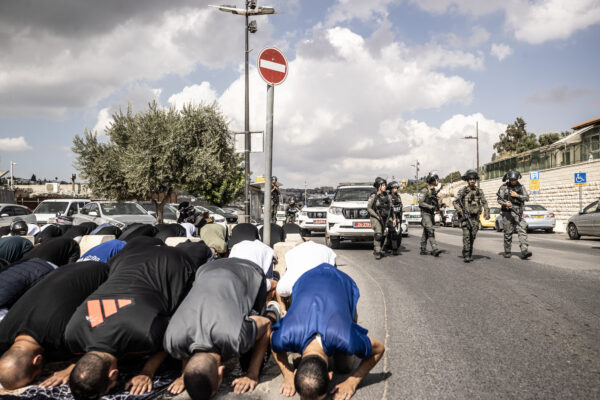
Israeli forces take security measures as Muslims perform Friday prayers on street in the Ras Al-Amud area after Israeli authorities barred Palestinians from entering the Al-Aqsa Mosque in East Jerusalem for the second Friday in a row on October 20, 2023. Photo: Mostafa Alkharouf/Anadolu Agency
Even more emphatically, the street view above rescales the division between Israeli police and Palestinian prayers, as the image gives us worshippers’ heads on pavement and bodies lined up like so many cars in a lot.
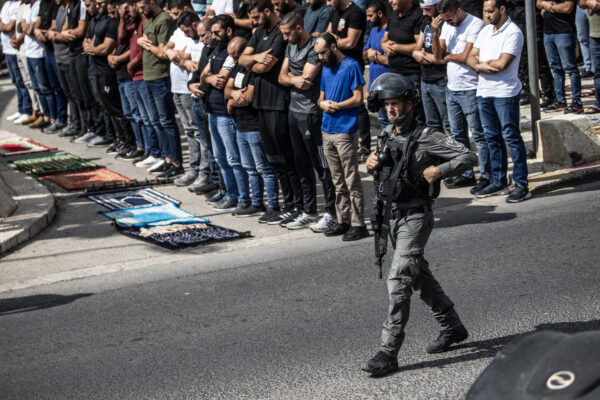
An official with the Waqf Department in Jerusalem told Israeli police only allowed Palestinians over the age of 65 into the Al-Aqsa Mosque. Only 5,000 Muslims did congregational Friday prayers at Al-Aqsa Mosque. Men under 50 and women under 65 were not allowed to enter the Old City area. Photo: Mostafa Alkharouf/Anadolu Agency
Pitting one against many, this image from the Andalou Agency establishes a visual irony that encourages us to look at strength in power over strength in numbers.
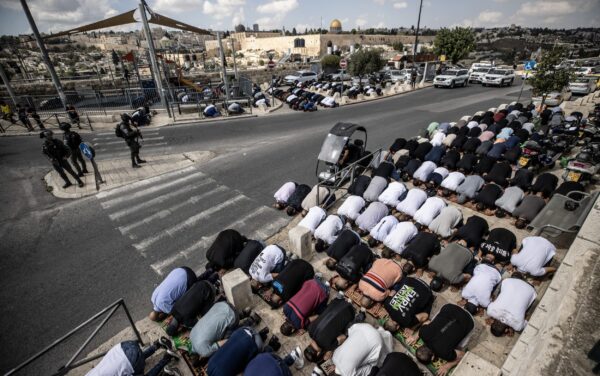
Israeli forces take security measures as Muslims perform Friday prayers on a street in the Ras Al-Amud area after Israeli authorities barred Palestinians from entering the Al-Aqsa Mosque. Photo: Mostafa Alkharouf/Andalou Agency
This image by Mostafa Alkharouf condenses regional disputes about location, displacement, and occupation. Like the region, the photo is tightly packed, as if forcing our attention on logistical challenges that come with interfaith and intercultural cooperation in close quarters.
Taking a broader geopolitical view, it also informs some of the circumstances surrounding the Hamas attack. With the Muslim worshipers crammed on two sides of the street, the picture embodies Palestinian anxiety over Israel normalizing relations with Arab nations in the region. An alliance with Saudi Arabia, specifically, could become the principle wedge that splits the Arab world.
Angle and position can also be seen as one of the moral tests of war photography, as any event is understood to be what it is only after it is framed. Passing or failing the moral test of the moment is a decision about what to include, what to leave out, and how to compose an invitation to see things from a fair angle. In this way, images from the region do not and will not settle matters for anyone. But they will make the conflict accessible from the full range of proximity, from the bird’s eye view of satellite photos to the most intimate and sadly recurring scenes of personal pain and loss.
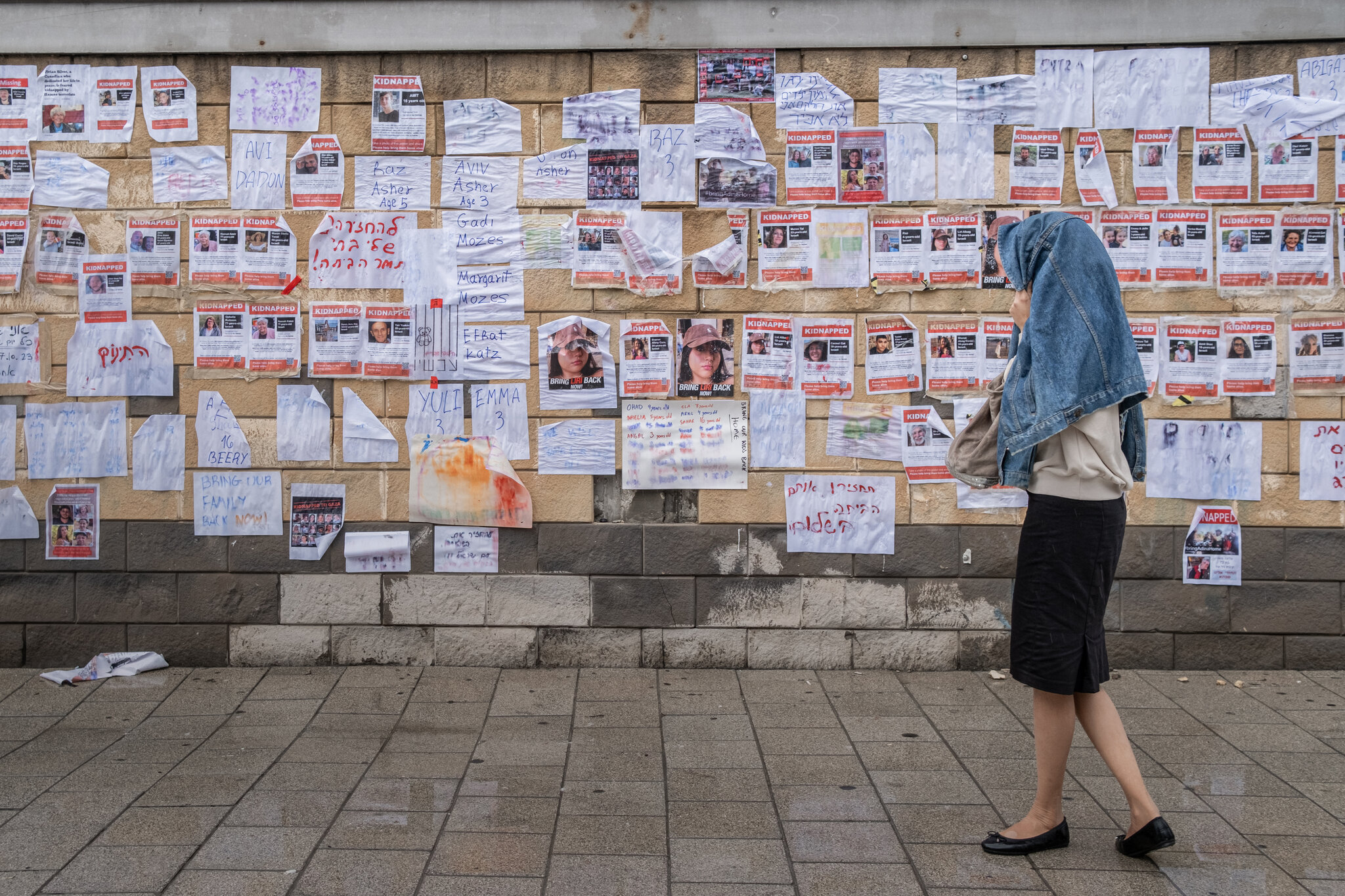
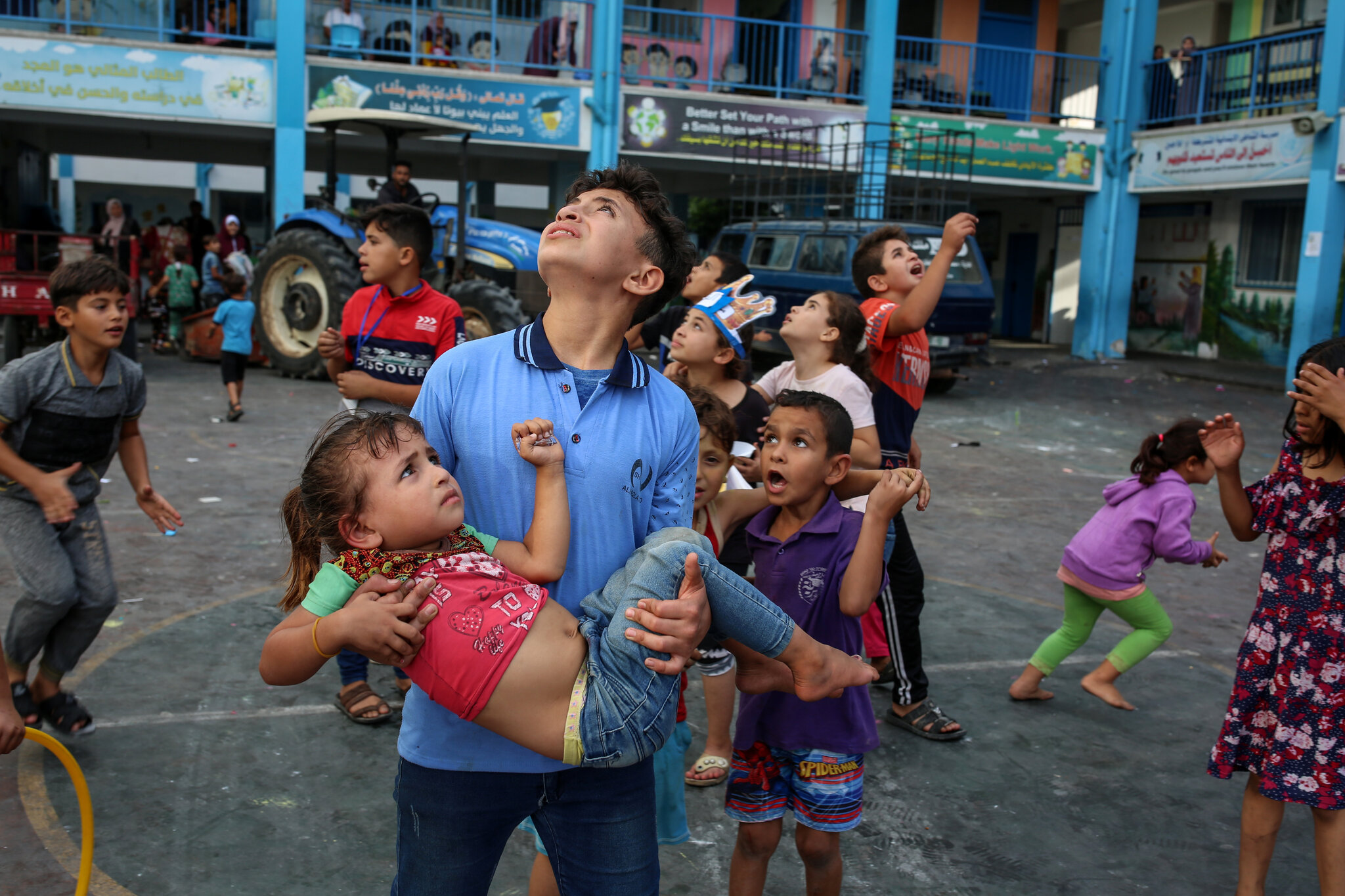
Reactions
Comments Powered by Disqus